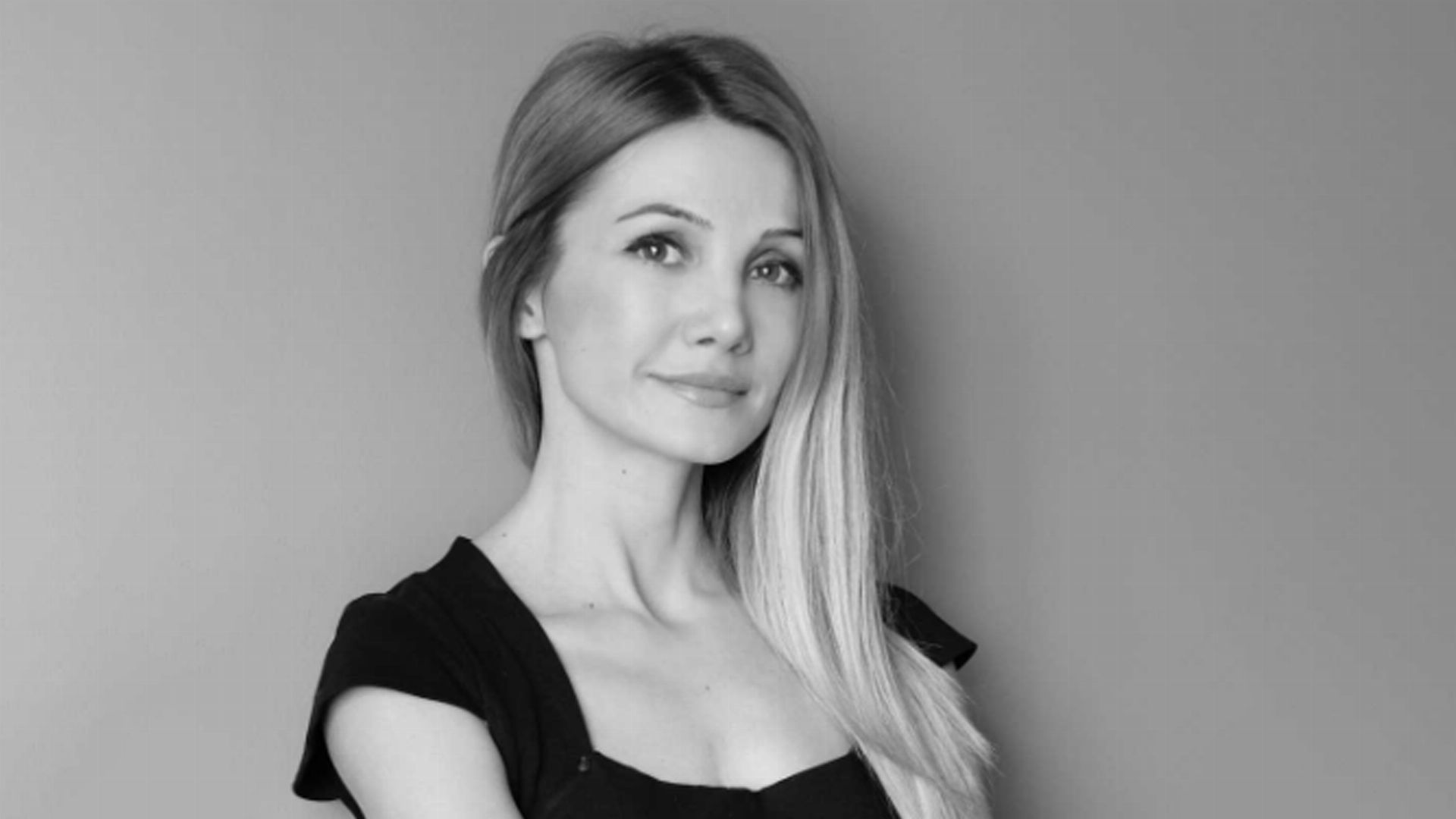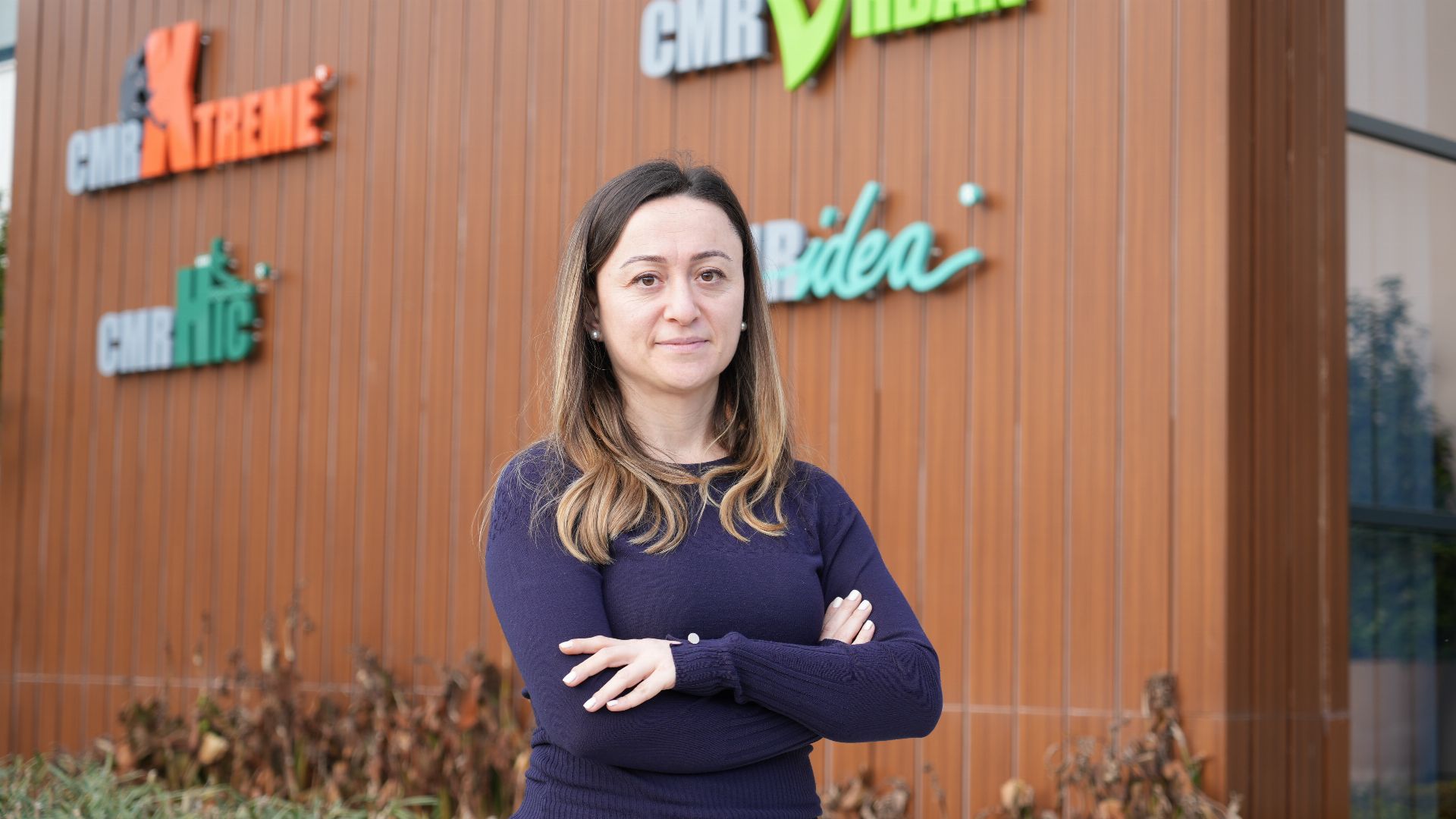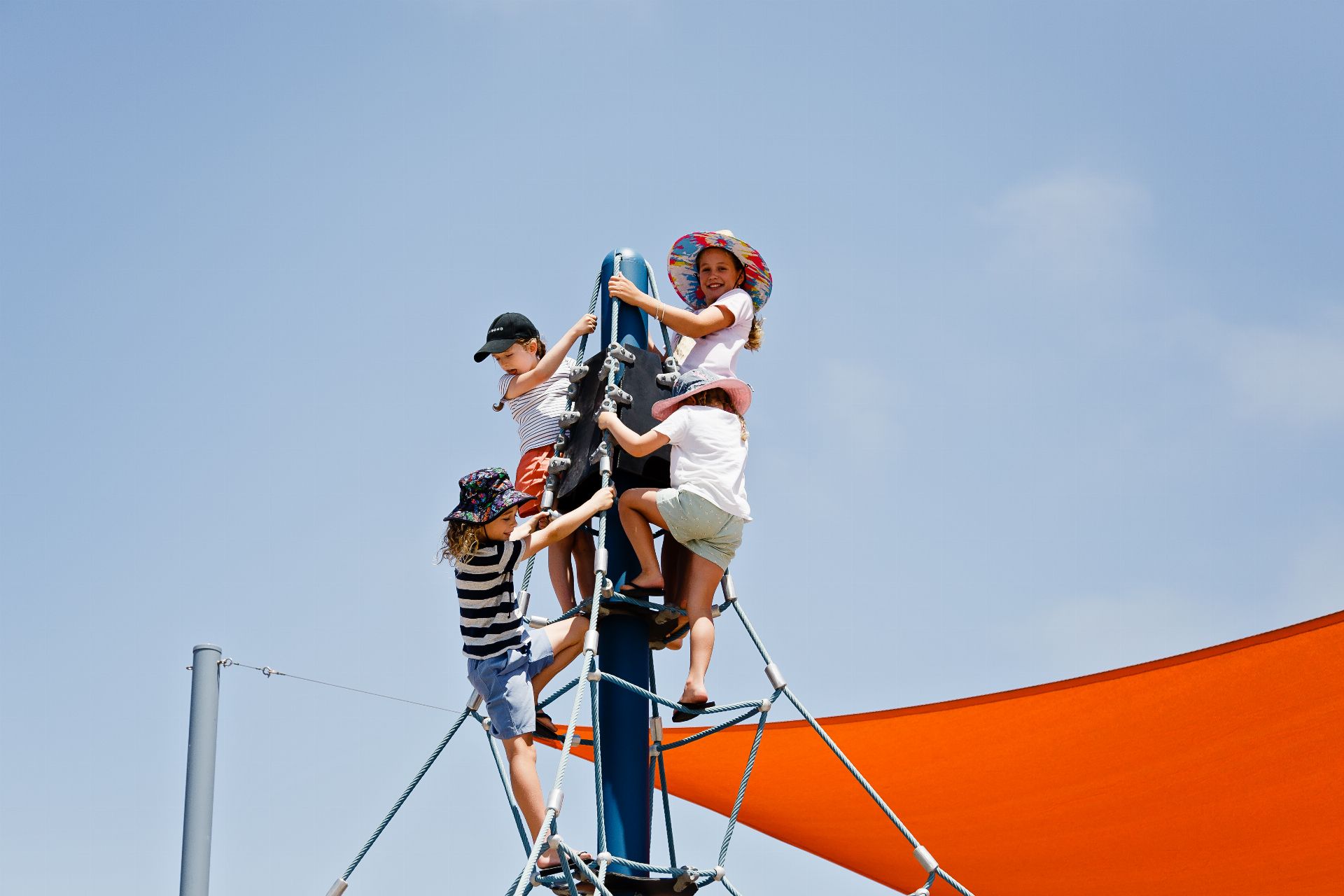
Children in Social Media and Entertainment Industry
Today’s children cannot envisage comprehend a world without smartphones and the Internet. Worldwide, children are growing up at a point in time when information and entertainment are at the tip of their fingers. In 2017, about 1 in 3 internet users was a child, making generation Z the leading consumer of the digital world.[1] The growing number of children owning smartphones and going online has grown exponentially in recent years. According to the United Nations Children's Fund (UNICEF), more than 175,000 children visit online platforms for the first time daily.[2] With the proliferation of the social media community, many business practitioners have identified digital platforms as valuable advertisement spaces. Increasing access to digital platforms exposes children to opportunities and benefits and a plethora of risks. The associated benefits notwithstanding, the burgeoning initiation of children into the social media environment risks their privacy, exposes them to a myriad of harmful messages, encourages financial exploitation, and leads to excessive consumption of new products.
Background
Social media and the entertainment industry have become critical components in the lives of the current generation. The former delineates a medium that enables users to engage in activities and events identified as its content as a means of sharing information with their social circles and others within the system and society.[3] More than ever before, many children have access to social platforms and other interactive sites where they can play games for entertainment. Facilitated by digital and electronic devices, children are growingly having a large presence in interactive screen-based media, such as Facebook, Myspace, YouTube, and blogs in the contemporary world.[4] Conversely, non-interactive social media platforms do not offer interactive experiences; rather, they feature content that electronic gadgets cannot manipulate, including ads, online images, songs, and films.[5] Thus, interactive and interactive digital platforms differ fundamentally from each other. Whereas the former enables users to interact and create a personalized experience, the latter allows them to be passive consumers.
The growing trend of social media use among children, and the general population is attributed to perceived opportunities. Many social networking sites have developed applications that have made communication easier by enabling sharing of photographs, videos, and short messages.[6] These enhancements have made social media a powerful communication tool for users. Besides, social media platforms have become a vital portal for entertainment. Many children use these platforms to play with each other for fun.[7] Additionally, children utilise social media as a learning tool. Some platforms, such as YouTube, have a rich archive of content that provides an array of educative content.[8] Overall, social media popularity among children is partly attributed to learning, entertainment, and communication opportunities.
Many children are growingly becoming social media sensational thanks to the help they receive from their parents. Contrary to traditional film or play-acting, most social media production occurs at home, with parents being the main directors. This paradigm shift could be accredited to the fact that most of the major platforms, such as TikTok, YouTube, and Instagram, do not permit users aged below thirteen years to open an account.[9] Therefore, parents must create accounts that their children will use to participate in online content creation. Besides, most of the children do not have the skills and competencies to write or produce their content without their parents' involvement. Undoubtedly, most children influencers have little knowledge of what their role in social media entails. To a large extent, they even do not understand what they are influencers to millions of other children. Thus, parents write and direct the content children influencers post on social media platforms. Lack of child independence has practical implications on the contracts children enter with potential commercial partners.[10] Due to the fact that parents control almost everything that children produce, the contracting firm has no authority compared to the conventional film set.
While most parents claim that children only play via social media, the industry has progressed significantly, with the generated content often being viewed as a business commodity. Such children appear in hundreds of posts annually and provide value for various sponsors.[11] Though the content may portray a child as playing, the production will often entail a certain product for marketing purposes. Under this circumstance, social media for play has transformed into a form of work.
While social media offers children many benefits, it presents a range of dangers. Risks to these risks are accredited to lack of awareness of privacy issues, vulnerability to outside influencers, and access to unregulated and unsupervised content.[12] This situation is compounded by the growing ease of accessing the Internet. About 38% and 64% of children access the Internet directly from their phones and laptops, respectively.[13] This ease of access raises serious concerns about the potential implication social media is likely to have on children’s safety, privacy, and educational performance. Many scholars and policy practitioners have weighed on this debate and have published materials concerning their findings. Thus, a comprehensive analysis of the existing body of information is critical to underscore the exact risks that children face due to the growing use of social media for communication, learning, and other purposes.
The Interaction of Children with Social Media and the Associated Risks
Exposure to Inappropriate Messages
There is strong evidence linking social media use and increased risk to a host of inappropriate content. Pornography is one of the harmful contents that many children find themselves exposed to due to social media. The British Board of Film Classification (BBFC) reports that online pornography has been fuelled by the widespread use of social media platforms. The BBFC’s written submission highlights a strong association between exposure to pornography and children’s sexual beliefs.[14] Therefore, intensive exposure to such content may be related to sexually deviant behaviours among young people. Arguably, this potential risk has made online pornography a significant cause of concern in the United Kingdom (UK).
Existing evidence reveals that exposure to pornography via social media has increased children’s risk of engaging in actual sex. A study by Girlguiding reports a host of risks associated with trends. 70% of the girls indicated that the growth in online pornography contributes to the unfair treatment of women in society.[15] At the same time, 80% of the participants believed that it encourages society to perceive girls as sex tools, while 78% attributed it gender-based stereotyping by boys.[16] 53% of the girls believed that online pornography motivates boys to coerce them into sexual activities to practice what they see on social platforms.[17] This evidence provides a strong indication that social media use may influence children to engage in sexual activities due to heightened exposure to pornographic content.
Exposure to hate speech is another common impact of social media on children. In a 2016 survey, the UK Safer Internet Centre showed that many children encounter a flurry of hate speech on social media platforms. 82% of the surveyed children reported coming across some form of hate speech messages, including offensive content targeted on individuals based on religion, race, gender, disability, and sexual orientation.[18] These shreds of evidence are upsetting, especially in the contemporary world whereby hate-related crimes have risen considerably. The findings further indicated that 24% of the respondents indicated to have received threats due to their gender, sexual orientation, or religion.[19] This trend amplifies the insufficiency of the English racist speech laws, especially in tackling online crimes. In England and Wales, racially-instigated hate speech is prohibited by Part III of the Public Order Act 1986. This statute criminalises various forms of words and behaviours that may trigger racial hatred or violence.[20] Thus, this law provides a framework to address issues of race-related hate or rumour-mongering.
While Part III of the Public Order Act mirrors other states' legal provisions, its efficacy in handling online hate speech is wanting. Specifically, this statute is consistent with other countries’ incitement laws that are founded on Articles 20 of International Covenant on Civil and Political Rights (ICCPR)[21] and 4 of The International Convention on the Elimination of Racial Discrimination (ICERD)[22] adopted by the Human Rights Committee. Despite covering various forms of prohibited speech, these statutes do not feature other racist speech messages that fall short of incitement. For instance, they do not include prohibitions on propaganda founded on concepts or theories of online white supremacy and neo-Nazi groups.[23] Therefore, states may need to adopt other legislation beyond the current narrow statutes on incitement to protect children and young people from all forms of hate speech via social media.
Closely linked to online hate speech, social media use exposes children to violent content. In 2018, Martin Hewitt, the Assistant Commissioner at the UK’s Metropolitan Police, gave comprehensive oral evidence on this association by noting:
At one end it [social media] glamorises and normalises gang behaviour, violent behaviour and the behaviours and criminality that are associated with gangs. At the other end of the spectrum, in some cases the use of social media as some form of taunt or challenge has led directly to very serious criminality, up to and including murders.[24]
He went further to argue:
What previously would have been a conflict between one gang and another that would have found its way through word of mouth […] can now very quickly become amplified and spread as it moves across the various platforms because things jump from platform to platform.[25]
Hewitt’s observations depict social media as a powerful tool for disseminating violent content among children. From a critical standpoint, these platforms have amplified the trend due to the diminishing presence of parents in social media. With many children now accessing social media via digital gadgets, these forms of violent messages are likely to permeate all corners of society.
Positioning of the Child as Consumers
The concept of perceiving children as consumers dates back to many decades due to the introduction of videos games in the 1970s. This trend has evolved significantly over the years due to advancements in digital technologies, as accentuated by Buckingham:
Over the past twenty years, digitization has led to the emergence of a whole range of new technologies of production, distribution and consumption. Previously distinct media forms and commodities have begun to converge, as television programmes are linked to websites, films, and computer games – and, of course, to merchandising and advertising.[26]
Buckingham’s sentiments imply that the growth of digital space is largely has been accompanied by the popular perception of children as consumers. Companies employ a broad range of techniques to lure and sustain children's attention. Some commercial players use product and brand placement in virtual settings and gaming platforms. Additionally, business practitioners utilize videos platforms to advertise their items to children. Compared with data mining techniques, this strategy enables companies to produce and advertise customised products to specific groups of children. Thus, the growing utilisation of digital tools and platforms to promote products to children has led to a new form of online consumption.
As digital platforms continue to become popular among young people, a new form of capitalism has emerged. Popularly known as surveillance capitalism, this concept entails capturing data from social media platforms and selling it to business practitioners for a fee.[27] In return, these data can be used to market products to the users by tracking their consumption trends. Big social media corporations, such as Facebook, Apple, Amazon, and Google, collect vast amounts of data from users and them it into products and services that have resulted in phenomenal commercial development.[28] This concentration of power over data ownership increases risks for security and privacy breaches. Many children are increasingly being exposed to privacy and security data breaches within the realm of surveillance capitalism. Indeed, most unborn children have their data stored online without their knowledge. Pregnant babies are growingly announcing their expectancy by posting ultrasound pictures on various social media platforms, such as Facebook, Pinterest, and Instagram.[29],[30] This data sharing raises serious concerns about children's privacy and security.
Surveillance capitalism is increasingly taking place in the lives of children regardless of the existing data security and privacy regulations. Some notable regulations include the EU General Data Protection Regulation and the future ePrivacy Regulation.[31] Despite the existence of these legal entities, many children continue to be exposed to data privacy issues. Most of the children’s Android applications in the United States prospectively violate data privacy provisions as provided for by the US Children’s Online Privacy Protection Act (COPPA).[32] Selling and sharing of children’s data are occurring at an elevated rate. About 5 million data points will have been collected and disseminated via ads into kids and family digital content by the time a child turns 3 to 4 years old.[33] This figure shoots to about 72 million by the period a child turns 13 years.[34] For example, AdTech uses big data mining technology that gathers about child location, pages visited, and devices accessed.[35] The ability to mine and share data on a large-scale for advertisement creates an environment that creates privacy encroachment.
Additionally, extensive sharing of information by parents online creates legal and safety risks for children. Some parents have found that this action can expose children to a stranger who may purport to their parents. For example, one mother found that the picture of her baby that she had shared online was being used by another who was pretending to be the parent.[36] In essence, these acts of pretence may create a situation whereby children’s pictures feature in other people’s home pages on various social media platforms. This trend has been reported by many other parents. Another woman realized that some Facebook users shared her child’s pictures and could follow the link back to see where they lived and many more details.[37] Besides, parental disclosures have also caused some children to become victims of bullies online. Specifically, some children get bullied online due to sharing of funny pictures online by their parents.[38] Numerous public Facebook groups have been created to make fun of pictures shared by other parents. These examples amplify the suggestion that sharing children’s content online can create privacy and safety concerns.
Loss of Privacy
The mounting utilization of social media in the contemporary world has made children be inducted as child labourers. Specifically, children have been initiated into the surveillance market as economic objects by their parents. Unlike the physical child labour model, this new framework entails mining data from children for commercial purposes.[39] This data includes extracting information about children’s interactions and content creation in virtual environments. For instance, YouTube viewers provide data on the most-watched videos within a range of 2 to 5 years, which advertisers can use to create profit.[40] A similar approach is used by Pokemon Go, which collects the identities and locations of its users. This location can also collect additional data, including users’ photographs, accounts, phone activities, and network connections. Niantic, the developer, also reserves the right to share all the data it obtains from children to third parties, such as advertisers and digital marketing, to generate extra revenue.[41] In this case, children have been commodified through the collection and sale of personal data.
Besides raising data privacy issues, the commodification of children on social media leads to loss of control of personal information and other adverse implications. Widespread concerns about the loss of control of personal data, profiling, and technological reliance, leading to access limitations to important services have been expressed.[42] Therefore, children may find it difficult to access vital online services due to the fear of profiling and other negative implications.
The growing commodification of children on social media is attributed to the much improved technical capacities. For instance, enhanced storage, expansion of artificial intelligence (AI) analytics, and increasing frequency of data sources have enabled business enterprises to access large volumes of data for marketing and sale of goods and services.[43] This trend has contributed significantly to turning children into commodities that generate substantial revenue for various commercial entities. In achieving this objective, surveillance capitalism entails tracking children’s movements, physical activities, body shapes, communication, and intellectual development.[44] Additionally, this data surveillance normalises the commodification culture by turning what was uncommon into a remarkable achievement. While the short-term implications are widely feasible, further studies are required to examine the extent to which extensive mining and selling of children’s data will affect them in the long term.
Furthermore, loss of personal data on social media platforms can lead to unintentional discrimination of groups of people online. Children's increasing use of social media platforms may be subject to data collection and analytical procedures that manipulate results and discriminate against specific or communities of children.[45] This scenario occurs when algorithms are founded on flawed presuppositions about a susceptible community of children when utilizing a specific type of data such as geolocation. This trend also occurs when under-or-over-representation of a cohort of disadvantaged children, leading to incorrect decisions by data analysis entities. Besides, these skewed findings and the resulting discrimination also occur due to overdependence on a specific type of data source instead of collecting information on a broad range of aspects.[46] In this case, more in-depth and verifiable techniques that enable triangulation of findings are disregarded. For example, school data found in classroom modelling apps may be collected from a local class and age-based context. This data may subsequently be used to evaluate and categorise a child’s behaviour beyond the actual personal age and specific classroom. Thus, the possibility of collecting inaccurate data from children via social media for marketing purposes may lead to discrimination.
Child Labour
Child labour has a long history that dates back to the 19th century, when it was perceived as a critical economic opportunity. Instead of considering it an ethical problem, most low-income families saw an opportunity to generate sizeable revenue in this form of labour.[47] During the industrial revolutions, many families relocated to cities such that they could make a better living. However, they could achieve this economic objective due to low wages, which made their lives even more difficult. Consequently, they supplemented their wages by sending their children off to work in industries.[48] Thus, the growing production rate during the industrial revolution created more jobs that even children could not find before this era. This paradigm shift suggests that the more a specific state or country became, the higher the number of children were subjected to child labour.
Nevertheless, child labour declined significantly at the end of the 19th century. The process of ending this form of labour took place in phases to allow industries to adjust their production functions. Children aged between 5 and 9 years were the first to be phased out followed by those ranging 10 and 14 years.[49] Nevertheless, teens aged over 14 years remained in the workforce for most of the few decades of the 20th century. Several reasons underscore the significant decline in the volume of child labour in the United States and Europe. Firstly, many families with better financial income decided to invest in their children in the form of education. Secondly, the demand for child labourers decreased substantially as machines became more complicated and could handle most of the production functions with minimal input from humans.[50] Thus, this shift rendered children surplus to requirements in the industrial workforce. Thirdly, this child labour model came to an abrupt end with the introduction of free education in many countries. For instance, the introduction of the 1983 Factory Act[51] in Britain and the 1864 Factories Act[52] reduced the number of children from the labour force. Besides, the 1870 Education Act[53] coupled with a series of reforms, made it mandatory for children aged between 5 and 10 years to attend school. Collectively, these reforms forced children across the UK to retreat from the workforce and concentrate on domestic and school chores.
With the tremendous growth of social media and online entertainment, a new form of child labour has emerged in the 21st century. Notably, some parents use their children to influence others and make profits in the process. Critical to achieving better outcomes is to ensure that children have developed a large base of followers with whom to influence on a broad range of aspect. These children are informally known as “kidfluencers.”[54] Unlike the conventional acting model, social media has enabled parents to make their children online stars by posting content about their children to influence their peers on interesting topics. Thus, individuals do not need industry connections to make their children household names but social media account, filming skills, and luck. Kidinfluencers generate revenue from business entities that pay for the children to advertise their products and from social media platforms that sell advertising opportunities on their channels. While states have adopted specific child labour laws to protect children from abuse, the online space has not received similar attention. For example, English law does not cover the use of children as online labourers by their parents.[55] Consequently, parents are increasingly posting a broad range of content about their children to generate revenue from social media platforms like YouTube.
The risk of financial exploitation in the social media context is one of the common ways through which children are subjected to forced labour. Children are particularly vulnerable to this form of exploitation by parents and companies that sponsor their content. Social media platforms offer parents who have access to the internet an opportunity to generate millions of revenue by commodifying their children.[56] On the same token, companies take advantage of this trend to market their products by providing tokens to parents willing to post their products on social media. For example, Melissa & Doug offers free toys and payments ready to post their children playing with its products and extra compensation based on the number of followers attracted.[57] This trend is amplified by the relative accessibility of social media fame and celebrity. Therefore, parents are motivated by monetary incentives to post their children’s content on social media platforms and for reputation and celebrity status. These motivations have forced parents to move to greater lengths in pushing their children to participate in social media content creation. One parent exclaimed: “Once we got to that age that [my son] resisted a lot, I shifted more to my daughter . . . . She is a little workhorse.”[58] This example illustrates the extent to which parents can go to gain celebrity, fame, and money using their children as a source of social media content.
Kidinfluencers are under intense risk of financial exploitation by parents and companies due to the absence of appropriate regulations protecting their earnings. For example, the current English laws on child labour have not been revised to incorporate social media. The absence of an effective protection law offers parents an absolute power to determine whether their children would participate in online content creation.[59] To ensure the success of their channels, influencing children to sacrifice a significant amount of their time and privacy each work while maintaining no legal right to their earnings. Besides privacy and financial exploitation, this work is likely to affect children’s academic performance adversely. Thus, parents’ intent to make children kidinfluencers can prevent them from performing better in school and potentially cause reputational harm.
Social medial child influencers are likely to be exploited financially by companies that sponsor them, primarily because they are not considered genuine employees. Firms that sponsor children’s content on social media have no control of their work.[60] Consequently, lack of official recognition implies that children who participate in social media content creation are not covered under most employment statutes, such as worker compensation, wage standards, and the right to unionize. Besides, most parents could be unprofessional contract negotiators despite representing their children in business agreements with companies. Therefore, children may be exploited by commercial enterprises due to a lack of proper representation in contract agreements.
Besides financial extortion, the consequences of child labour are exemplified by the health risks for minors who participate as social media influencers. The extreme loss of privacy that social media influencers experience is a unique threat to children’s mental health and physical safety.[61] This prospect is magnified because, unlike conventional film actors, children influencers perform from their homes and use their real names.[62] Typical activities that such children post online include daily activities, such as eating patterns, school assignments, and engagements with their parents. Compounded by the massive amount of content that influencers are expected to share online implies that they are on camera and in front of millions of audiences continuously. Similarly to the conventional child labour model, kidinfluencers experienced a heightened risk of online harassment and stalking. Due to the ability of audiences to message their audiences directly on social media, some people take this as an opportunity to send them insults. The wall between social media celebrities and audiences is significantly narrow to the extent that the latter can communicate with the former directly and track their whereabouts.[63] Arguably, stories of online harassment are rampant in the contemporary world in which celebrities are vulnerable to ease of access by their audiences. For example, celebrities find themselves at the receiving end of body humiliation, death warnings, and other personal forms of harassment.[64] Overall, the extensive use of children by their parents as sources of income exposes them to a myriad of negative implications associated with child labour.
Recommendations
The increasing risks associated with the presence of children in social media and the entertainment industry underscores the need to adopt effective legal measures. In the context of the UK government, there is a need to strengthen the existing laws to protect children from prospective abuse and exploitation. The government should not regulate social media production through labour laws when the content is not commercialised. This approach is justifiable due to the fact that parental authority outweighs the risks of exploitation. On the same token, the government should not apply the permit law for children for owning social media accounts. Virtually all content on social media attracts some form of value; therefore, it would be absurd for the government to require all individuals earning some profit by posting content online adhere to permit and workplace regulations.
However, the government should ensure that children are protected from potential exploitation by their parents or companies. The British government can introduce an appropriate trust similar to Coogan laws[65] in California, the United States. While parents are tasked with protecting their children, they may be tempted to forego it when they stand to generate millions of dollars from social media content.[66] Therefore, requiring trust laws for all kidinfluencers can protect them from the same financial plight that thousands of child celebrities encounter at the hands of their parents. Consistent with the principle of intrinsic fairness, trust laws will ensure that children are compensated for their effort and loss of privacy.
The UK government should introduce relevant laws to ensure that children obtain work permits for pain social media content generation. These permits should apply specifically for child influencers, who make millions of dollars online appropriate legal documents. However, specific considerations must be taken into account to ensure that work permits work for the best interest of the children.[67] Firstly, the government should ensure that social media work does not extensively interfere with educational rights. In this case, the law should require schools to verify children’s performance records over time to determine whether their role as social media influencers is harmful to their learning process. Secondly, parents should actively declare that their children are social media workers for their permits to be renewed periodically. This approach will ensure that parents are constantly reminded that their children are workers in the social media context. Thirdly, responsible state agencies should continuously collect data to inform the development of better policy decisions.
Additionally, the UK government should enact appropriate production regulations to protect social media child influencers. Despite the growth of the child influencer industry, mainstream attention to common child actor regulations, such as work conditions, hours, and on-set trainers, are lacking.[68] These types of laws will protect children from potential exploitation during the production phase. In spite of this importance, these regulations may be hard to implement. Thus, the regulations should contain provisions that compel companies or parents to ensure children work in safe environments and other workplace conditions.
Conclusion
Rapid advances in digital technologies have resulted in the development of highly innovative communication and entertainment platforms. The development of various social media platforms is noteworthy. These platforms have become common forms of communication, socialization, and entertainment tools for many people, including children. In addition to the prospective opportunities associated with social media platforms, the increasing presence of children raises significant privacy, exposure to harmful messages, financial exploitation, and excessive consumption of new products concerns. Most social media children influencers generate millions of dollars but do not have direct control of such returns. Relevant laws concerning how to compensate children for their labour, protect them from exposure to harmful content, exploitation, and infringement of their education rights are lacking. Due to the potential to generate massive income from social media, parents may be tempted to infringe some of the fundamental rights of children without knowing. Despite the gravity of these concerns, governments have not adopted appropriate laws to protect children. Similarly, the UK is yet to enact suitable regulations to safeguard children, especially kidinfluencers, from adverse implications. For enhanced efficacy, the government should enact laws targeted at production, data mining, and compensation.
Bibliography
Berman G and Kerry Albright, ‘Children and the Data Cycle: Rights and Ethics in a Big Data World’ (UNICEF, June 2017) <https://www.unicef-irc.org/publications/pdf/IWP_2017_05.pdf>. Accessed 10 November 2021.
British Board of Film Classification (SMH0162) [2018] BCC
Buckingham D, The Material Child: Growing Up in Consumer Culture (first published 2011, Polity Press 2011)
Committee Impact of social media and screen-use on young people’s health HC (2017–19) [14]
Donell H, ‘Surveillance Capitalism and Children’s Data: The Internet of Toys and Things for Children’ (2019) 170 Media International Australia 27.
Dyer T, ‘The Effects of Social Media on Children’ (2018) 14 djim.management.dal.ca 1.
Education Act 1870
Ersoy M, ‘Social Media and Children,’ in Sar?, Gül? (eds), Handbook of Research on Children's Consumption of Digital Media (GI Global, 2018).
Factories Act 1864
Factory Act 1983
Girlguiding (SMH0059) [2018] BCC
International Covenant on Civil and Political Rights [1966] ICLQ, art 20
John H, ‘The Cambridge Analytica Saga is a Scandal of Facebook’s Own Making’ (Guardian Media Group, 21 March 2018) <https://www.theguardian.com/commentisfree/2018/mar/21/cambridge-analytica-facebook-data-users-profit> Accessed 10 November 2021.
Leaver T, ‘Born digital? Presence, Privacy, and Intimate Surveillance’ in John Hartley and William Qu (eds), Re-Orientation: Translingual Transcultural Transmedia: Studies in Narrative, Language, Identity, and Knowledge (Fudan University Press, 2017).
Mascheroni G and Donell Holloway, ‘The Quantified Child: Discourses And Practices Of Dataveillance In Different Life Stages’ in Ola Erstad, Rosie Flewitt, Bettina Kümmerling-Meibauer, and Íris Susana Pires Pereira (eds), Routledge Handbook of Digital Literacies in Early Childhood (first published 2019, Routledge 2019).
Masterson MA, ‘When Play Becomes Work: Child Labor Laws In The Era Of “Kidfluencers”’ (2021) 169 University of Pennsylvania Law Review 577.
Moore M, Tech Giants and Civic Power Centre for the Study of Media (CMCP, Policy Institute, King's College London 2016)
Nationwide Mutual Ins. Co. v. Darden, 503 U.S. 318, 322 (1992)
Nguon v. Wolf [2007] 517 F.
Oral Evidence: Impact Of Social Media and Screen‑Use on Young People’s Health HC 92017-19) [822]
Reyes, I Primal Wijesekera, Joel Reardon, Amit Elazari Bar On, Abbas Razaghpanah, Narseo Vallina-Rodriguez, and Serge Egelman, ‘Won’t Somebody Think of the Children?” Examining COPPA Compliance at Scale’ (2018) 3 Proceedings on Privacy Enhancing Technologies 63.
Rosman K, ‘Why Isn’t Your Toddler Paying the Mortgage?’ The New York Times (New York, 27 September 2017)
Rottenberg J, Oliver Stone Calls ‘Pokemon Go’ ‘Surveillance Capitalism’ (Ross Levinsohn 2016).
Sapna Maheshwari, ‘Online and Making Thousands, at Age 4: Meet the Kidfluencers’ The New York Times (New York, 1 March 2019)
Steinberg SB, ‘Sharenting: Children's Privacy in the Age of Social Media’ (2017) 66 Emory Law Journal 839.
The Coogan Law 1939
The International Convention on the Elimination of Racial Discrimination [1969] ICLQ
The United Nations Children's Fund, ‘More Than 175,000 Children Go Online For The First Time Every Day, Tapping Into Great Opportunities, But Facing Grave Risks’ (UNICEF, 1 February 2018) <https://www.unicef.org/eap/press-releases/more-175000-children-go-online-first-time-every-day-tapping-great-opportunities>. Accessed 10 November 2021.
Zuboff S, ‘Big Other: Surveillance Capitalism and the Prospects of an Information Civilization’ (2015) 30 Journal of Information Technology 75.
Büşra Eroğlu
[1]. The United Nations Children's Fund, ‘More Than 175,000 Children Go Online For The First Time Every Day, Tapping Into Great Opportunities, But Facing Grave Risks’ (UNICEF, 1 February 2018) <https://www.unicef.org/eap/press-releases/more-175000-children-go-online-first-time-every-day-tapping-great-opportunities>. Accessed 10 November 2021.
[2]. Ibid.
[3]. Mustafa Ersoy, ‘Social Media and Children,’ in Sar?, Gül? (eds), Handbook of Research on Children's Consumption of Digital Media (GI Global, 2018).
[4]. Ibid.
[5]. Ibid.
[6]. Ibid.
[7]. Ibid.
[8]. Ibid.
[9]. Marina A. Masterson, ‘When Play Becomes Work: Child Labor Laws In The Era Of “Kidfluencers”’ (2019) 169 University of Pennsylvania Law Review 577.
[10]. Ibid.
[11]. Ibid.
[12]. Tobbi Dyer, ‘The Effects of Social Media on Children’ (2018) 14 djim.management.dal.ca 1.
[13]. Ibid.
[14]. British Board of Film Classification (SMH0162) [2018] BCC
[15]. Girlguiding (SMH0059) [2018] BCC
[16]. Ibid.
[17]. Ibid.
[18]. Committee Impact of social media and screen-use on young people’s health HC (2017–19) [14]
[19]. Ibid
[20]. Ibid
[21]. Articles 20 of International Covenant on Civil and Political Rights [1966] ICLQ, art 20
[22]. The International Convention on the Elimination of Racial Discrimination [1969 ] ICLQ
[23]. Ibid.
[24]. Oral Evidence: Impact Of Social Media and Screen‑Use on Young People’s Health HC 92017-19) [822]
[25]. Ibid.
[26]. David Buckingham, The Material Child: Growing Up in Consumer Culture (first published 2011, Polity Press 2011)
[27]. Shoshana Zuboff, ‘Big Other: Surveillance Capitalism and the Prospects of an Information Civilization’ (2015) 30 Journal of Information Technology 75.
[28]. Martin Moore, Tech Giants and Civic Power Centre for the Study of Media (CMCP, Policy Institute, King's College London 2016)
[29]. Tama Leaver, ‘Born digital? Presence, Privacy, and Intimate Surveillance’ in John Hartley and William Qu (eds), Re-Orientation: Translingual Transcultural Transmedia: Studies in Narrative, Language, Identity, and Knowledge (Fudan University Press, 2017).
[30]. The United States v. Drew Prosecution and the Computer Fraud and Abuse Act, 14 J
[31]. Irwin Reyes, Primal Wijesekera, Joel Reardon, Amit Elazari Bar On, Abbas Razaghpanah, Narseo Vallina-Rodriguez, and Serge Egelman, ‘Won’t Somebody Think of the Children?” Examining COPPA Compliance at Scale’ (2018) 3 Proceedings on Privacy Enhancing Technologies 63.
[32]. Ibid.
[33]. Harris John, ‘The Cambridge Analytica Saga is a Scandal of Facebook’s Own Making’ (Guardian Media Group, 21 March 2018) <https://www.theguardian.com/commentisfree/2018/mar/21/cambridge-analytica-facebook-data-users-profit>. Accessed 10 November 2021
[34]. Ibid.
[35]. Ibid.
[36]. Stacey B. Steinberg, ‘Sharenting: Children's Privacy in the Age of Social Media’ (2017) 66 Emory Law Journal 839.
[37]. Ibid.
[38]. Ibid.
[39]. John Rottenberg, Oliver Stone Calls ‘Pokemon Go’ ‘Surveillance Capitalism’ (Ross Levinsohn 2016).
[40]. Ibid.
[41]. Ibid.
[42]. Gabrielle Berman and Kerry Albright, ‘Children and the Data Cycle: Rights and Ethics in a Big Data World’ (UNICEF, June 2017) <https://www.unicef-irc.org/publications/pdf/IWP_2017_05.pdf>. Accessed 10 November 2021.
[43]. Ibid.
[44]. Giovanna Mascheroni and Donell Holloway, ‘The Quantified Child: Discourses And Practices Of Dataveillance In Different Life Stages’ in Ola Erstad, Rosie Flewitt, Bettina Kümmerling-Meibauer, and Íris Susana Pires Pereira (eds), Routledge Handbook of Digital Literacies in Early Childhood (first published 2019, Routledge 2019).
[45]. Holloway Donell, ‘Surveillance Capitalism and Children’s Data: The Internet of Toys and Things for Children’ (2019) 170 Media International Australia 27.
[46]. Ibid.
[47]. Ibid.
[48]. Ibid.
[49]. Ibid.
[50]. Ibid.
[51]. Factory Act 1983
[52]. Factories Act 1864
[53]. Education Act 1870
[54]. Katherine Rosman, ‘Why Isn’t Your Toddler Paying the Mortgage?’ The New York Times (New York, 27 September 2017)
[55]. Ibid.
[56]. Marina A. Masterson, ‘When Play Becomes Work: Child Labour Laws In The Era Of “Kidfluencers”’ (2021) 169 University of Pennsylvania Law Review 577.
[57]. Sapna Maheshwari, ‘Online and Making Thousands, at Age 4: Meet the Kidfluencers’ The New York Times (New York, 1 March 2019)
[58]. Nationwide Mutual Ins. Co. v. Darden, 503 U.S. 318, 322 (1992)
[59]. Marina A. Masterson, ‘When Play Becomes Work: Child Labor Laws In The Era Of “Kidfluencers”’ (2021) 169 University of Pennsylvania Law Review 577.
[60]. Holloway Donell, ‘Surveillance Capitalism and Children’s Data: The Internet of Toys and Things for Children’ (2019) 170 Media International Australia 27.
[61]. Nguon v. Wolf [2007] 517 F.
[62]. Marina A. Masterson, ‘When Play Becomes Work: Child Labor Laws In The Era Of “Kidfluencers”’ (2021) 169 University of Pennsylvania Law Review 577.
[63]. Ibid.
[64]. Ibid.
[65]. The Coogan Law 1939
[66]. Ibid.
[67]. Ibid.
[68]. Ibid.

















